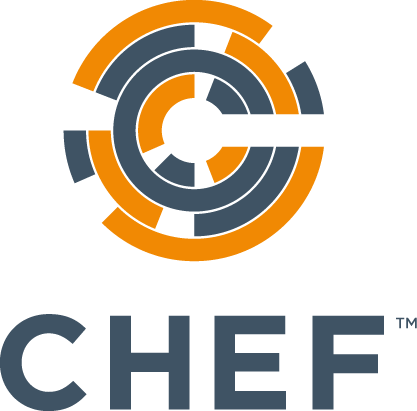Updating the CA Certificate bundle in Chef Installations

Installations of the Chef Development Kit and the Chef Workstation include their own bundle of Certificate Authority Certificates. As these are tied to the installation of Chef, an upgrade generally means that you'd need to update Chef.
This may not always be possible - in a lot of environments, you'll be using a private certificate authority for internal-only applications, which means as much as you update Chef, it'll never trust your internal services. Alternatively, you may be stuck on an older version of Chef, and unable/unwilling to upgrade to a newer version, so need a way of updating/augmenting the certs.
For instance, let's say that we're on a very old version of Chef (from ~2018):
$ chef --version
Chef Development Kit Version: 3.5.13
chef-client version: 14.7.17
delivery version: master (6862f27aba89109a9630f0b6c6798efec56b4efe)
berks version: 7.0.6
kitchen version: 1.23.2inspec version: 3.0.52
Due to the Let's Encrypt root certificate expiry, a number of domains in 2022 will no longer be trusted by this version of Chef, as the CA Certs don't include the new root certificate.
This means that if we were to try and interact with a certificate that has a root cert from the new Let's Encrypt cert, we'd see a certificate error:
$ curl --cacert /opt/chefdk/embedded/ssl/cert.pem https://www-api.jvt.me -I
curl: (60) SSL certificate problem: certificate has expired
More details here: https://curl.haxx.se/docs/sslcerts.html
curl failed to verify the legitimacy of the server and therefore could not
establish a secure connection to it. To learn more about this situation and
how to fix it, please visit the web page mentioned above.
This is also true for internal CA certs, in the case you're running your own Public Key Infrastructure (PKI).
So how do we update it? If we look at /opt/chefdk/embedded/ssl/cert.pem on the ChefDK, or /opt/chef-workstation/embedded/ssl/cert.pem on the Chef Workstation, we can see the format of the file:
##
## Bundle of CA Root Certificates
##
## Certificate data from Mozilla as of: Wed Oct 17 03:12:10 2018 GMT
##
## This is a bundle of X.509 certificates of public Certificate Authorities
## (CA). These were automatically extracted from Mozilla's root certificates
## file (certdata.txt). This file can be found in the mozilla source tree:
## https://hg.mozilla.org/releases/mozilla-release/raw-file/default/security/nss/lib/ckfw/builtins/certdata.txt
##
## It contains the certificates in PEM format and therefore
## can be directly used with curl / libcurl / php_curl, or with
## an Apache+mod_ssl webserver for SSL client authentication.
## Just configure this file as the SSLCACertificateFile.
##
## Conversion done with mk-ca-bundle.pl version 1.27.
## SHA256: 3f875d87fee4ce3d966c69f1d6c111aa95c0143ade59e4fa24882c582bb5f0ca
##
GlobalSign Root CA
==================
-----BEGIN CERTIFICATE-----
MIIDdTCCAl2gAwIBAgILBAAAAAABFUtaw5QwDQYJKoZIhvcNAQEFBQAwVzELMAkGA1UEBhMCQkUx
GTAXBgNVBAoTEEdsb2JhbFNpZ24gbnYtc2ExEDAOBgNVBAsTB1Jvb3QgQ0ExGzAZBgNVBAMTEkds
b2JhbFNpZ24gUm9vdCBDQTAeFw05ODA5MDExMjAwMDBaFw0yODAxMjgxMjAwMDBaMFcxCzAJBgNV
BAYTAkJFMRkwFwYDVQQKExBHbG9iYWxTaWduIG52LXNhMRAwDgYDVQQLEwdSb290IENBMRswGQYD
VQQDExJHbG9iYWxTaWduIFJvb3QgQ0EwggEiMA0GCSqGSIb3DQEBAQUAA4IBDwAwggEKAoIBAQDa
DuaZjc6j40+Kfvvxi4Mla+pIH/EqsLmVEQS98GPR4mdmzxzdzxtIK+6NiY6arymAZavpxy0Sy6sc
THAHoT0KMM0VjU/43dSMUBUc71DuxC73/OlS8pF94G3VNTCOXkNz8kHp1Wrjsok6Vjk4bwY8iGlb
Kk3Fp1S4bInMm/k8yuX9ifUSPJJ4ltbcdG6TRGHRjcdGsnUOhugZitVtbNV4FpWi6cgKOOvyJBNP
c1STE4U6G7weNLWLBYy5d4ux2x8gkasJU26Qzns3dLlwR5EiUWMWea6xrkEmCMgZK9FGqkjWZCrX
gzT/LCrBbBlDSgeF59N89iFo7+ryUp9/k5DPAgMBAAGjQjBAMA4GA1UdDwEB/wQEAwIBBjAPBgNV
HRMBAf8EBTADAQH/MB0GA1UdDgQWBBRge2YaRQ2XyolQL30EzTSo//z9SzANBgkqhkiG9w0BAQUF
AAOCAQEA1nPnfE920I2/7LqivjTFKDK1fPxsnCwrvQmeU79rXqoRSLblCKOzyj1hTdNGCbM+w6Dj
Y1Ub8rrvrTnhQ7k4o+YviiY776BQVvnGCv04zcQLcFGUl5gE38NflNUVyRRBnMRddWQVDf9VMOyG
j/8N7yy5Y0b2qvzfvGn9LhJIZJrglfCm7ymPAbEVtQwdpf5pLGkkeB6zpxxxYu7KyJesF12KwvhH
hm4qxFYxldBniYUr+WymXUadDKqC5JlR3XC321Y9YeRq4VzW9v493kHMB65jUr9TU/Qr6cf9tveC
X4XSQRjbgbMEHMUfpIBvFSDJ3gyICh3WZlXi/EjJKSZp4A==
-----END CERTIFICATE-----
GlobalSign Root CA - R2
=======================
-----BEGIN CERTIFICATE-----
...
Fortunately, this file is a bundle of the certificates, which can have a title for human readable means, but contains the root CA's certificate.
Adding a single certificate
So, if we wanted to get our very old ChefDK working, we'd locate the root certificate for Let's Encrypt, and simply append it to the end of the file:
...
-----END CERTIFICATE-----
ISRG Root X1
============
-----BEGIN CERTIFICATE-----
MIIFazCCA1OgAwIBAgIRAIIQz7DSQONZRGPgu2OCiwAwDQYJKoZIhvcNAQELBQAwTzELMAkGA1UE
BhMCVVMxKTAnBgNVBAoTIEludGVybmV0IFNlY3VyaXR5IFJlc2VhcmNoIEdyb3VwMRUwEwYDVQQD
EwxJU1JHIFJvb3QgWDEwHhcNMTUwNjA0MTEwNDM4WhcNMzUwNjA0MTEwNDM4WjBPMQswCQYDVQQG
EwJVUzEpMCcGA1UEChMgSW50ZXJuZXQgU2VjdXJpdHkgUmVzZWFyY2ggR3JvdXAxFTATBgNVBAMT
DElTUkcgUm9vdCBYMTCCAiIwDQYJKoZIhvcNAQEBBQADggIPADCCAgoCggIBAK3oJHP0FDfzm54r
Vygch77ct984kIxuPOZXoHj3dcKi/vVqbvYATyjb3miGbESTtrFj/RQSa78f0uoxmyF+0TM8ukj1
3Xnfs7j/EvEhmkvBioZxaUpmZmyPfjxwv60pIgbz5MDmgK7iS4+3mX6UA5/TR5d8mUgjU+g4rk8K
b4Mu0UlXjIB0ttov0DiNewNwIRt18jA8+o+u3dpjq+sWT8KOEUt+zwvo/7V3LvSye0rgTBIlDHCN
Aymg4VMk7BPZ7hm/ELNKjD+Jo2FR3qyHB5T0Y3HsLuJvW5iB4YlcNHlsdu87kGJ55tukmi8mxdAQ
4Q7e2RCOFvu396j3x+UCB5iPNgiV5+I3lg02dZ77DnKxHZu8A/lJBdiB3QW0KtZB6awBdpUKD9jf
1b0SHzUvKBds0pjBqAlkd25HN7rOrFleaJ1/ctaJxQZBKT5ZPt0m9STJEadao0xAH0ahmbWnOlFu
hjuefXKnEgV4We0+UXgVCwOPjdAvBbI+e0ocS3MFEvzG6uBQE3xDk3SzynTnjh8BCNAw1FtxNrQH
usEwMFxIt4I7mKZ9YIqioymCzLq9gwQbooMDQaHWBfEbwrbwqHyGO0aoSCqI3Haadr8faqU9GY/r
OPNk3sgrDQoo//fb4hVC1CLQJ13hef4Y53CIrU7m2Ys6xt0nUW7/vGT1M0NPAgMBAAGjQjBAMA4G
A1UdDwEB/wQEAwIBBjAPBgNVHRMBAf8EBTADAQH/MB0GA1UdDgQWBBR5tFnme7bl5AFzgAiIyBpY
9umbbjANBgkqhkiG9w0BAQsFAAOCAgEAVR9YqbyyqFDQDLHYGmkgJykIrGF1XIpu+ILlaS/V9lZL
ubhzEFnTIZd+50xx+7LSYK05qAvqFyFWhfFQDlnrzuBZ6brJFe+GnY+EgPbk6ZGQ3BebYhtF8GaV
0nxvwuo77x/Py9auJ/GpsMiu/X1+mvoiBOv/2X/qkSsisRcOj/KKNFtY2PwByVS5uCbMiogziUwt
hDyC3+6WVwW6LLv3xLfHTjuCvjHIInNzktHCgKQ5ORAzI4JMPJ+GslWYHb4phowim57iaztXOoJw
TdwJx4nLCgdNbOhdjsnvzqvHu7UrTkXWStAmzOVyyghqpZXjFaH3pO3JLF+l+/+sKAIuvtd7u+Nx
e5AW0wdeRlN8NwdCjNPElpzVmbUq4JUagEiuTDkHzsxHpFKVK7q4+63SM1N95R1NbdWhscdCb+ZA
JzVcoyi3B43njTOQ5yOf+1CceWxG1bQVs5ZufpsMljq4Ui0/1lvh+wjChP4kqKOJ2qxq4RgqsahD
YVvTH9w7jXbyLeiNdd8XM2w9U/t7y0Ff/9yi0GE44Za4rF2LN9d11TPAmRGunUHBcnWEvgJBQl9n
JEiU0Zsnvgc/ubhPgXRR4Xq37Z0j4r7g1SgEEzwxA57demyPxgcYxn/eR44/KJ4EBs+lVDR3veyJ
m+kXQ99b21/+jh5Xos1AnX5iItreGCc=
-----END CERTIFICATE-----
In this specific case of the Let's Encrypt, we'd also need to remove the other CA certs that have expired, and once we do, HTTPS calls succeed!
Updating the whole CA Cert bundle
Alternatively, you may want to completely modernise the CA Cert bundle, making sure it's updated to a newer version.
As noted in the cert bundle, we're using the bundle from Mozilla, which can either be extracted yourself, or using the pre-extracted bundle that curl provides.
